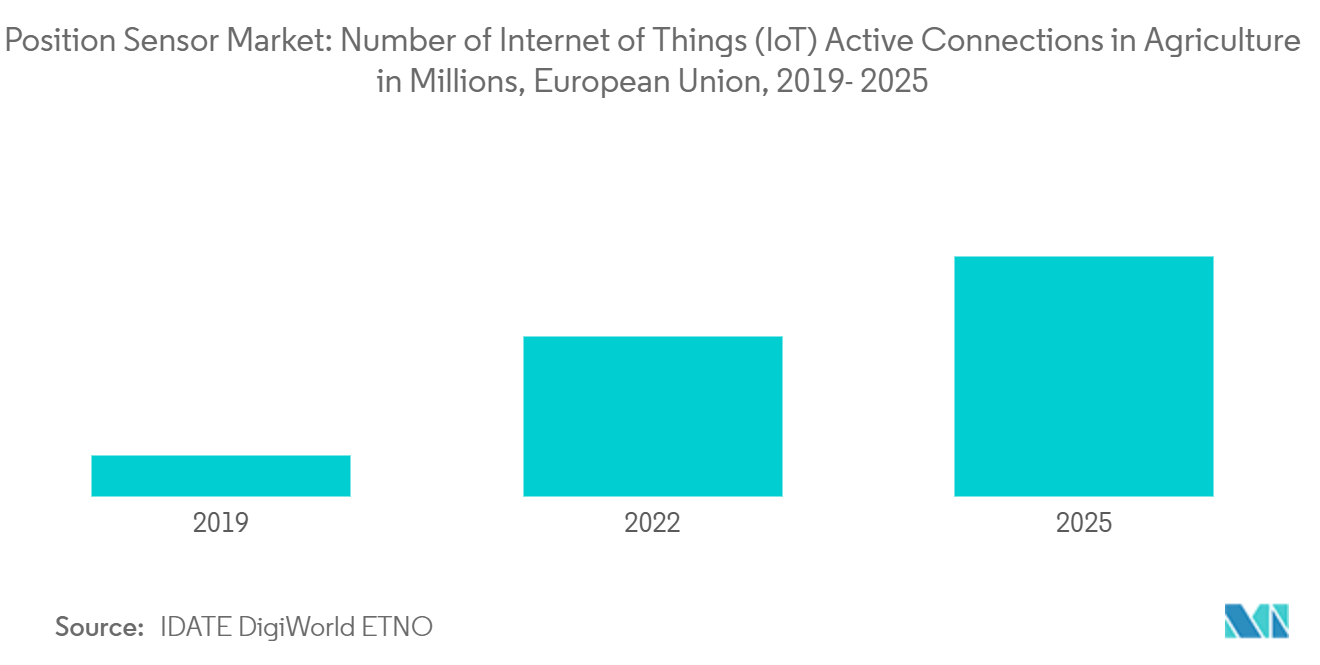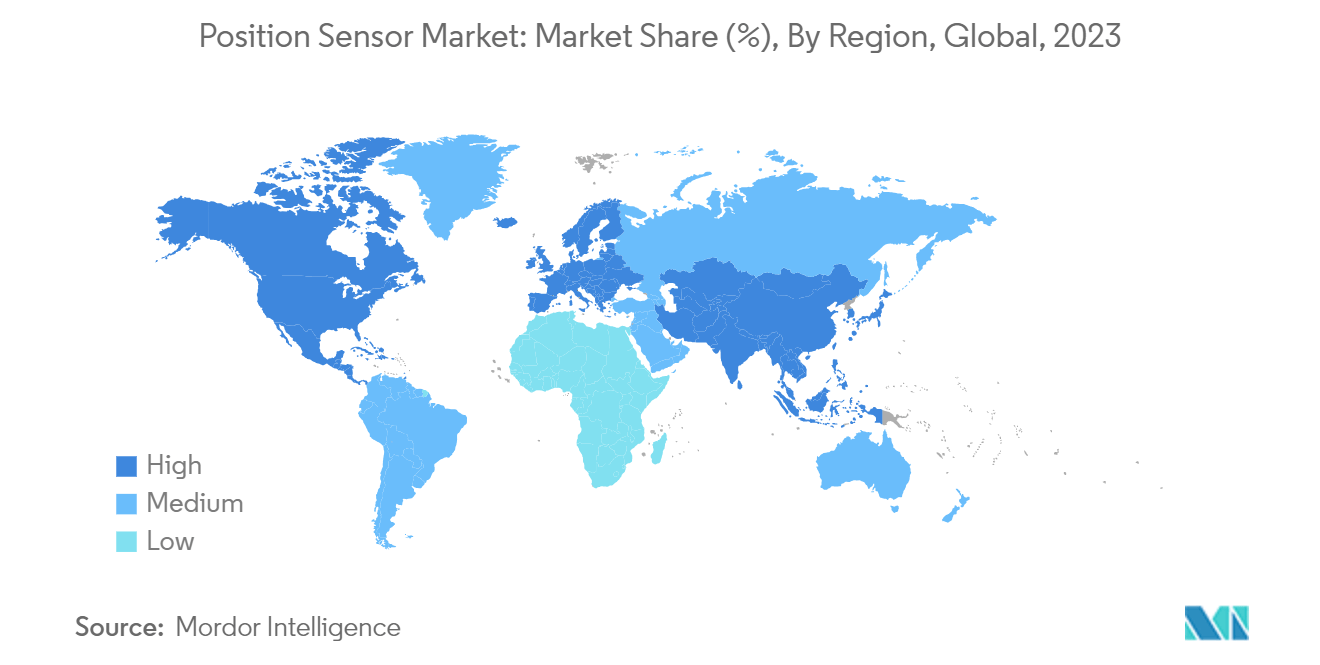Market Trends of Position Sensor Industry
Increased Adoption of Precision Agriculture, and Government Initiatives Driving the Market
- Position sensors play a crucial role in precision agriculture, enabling GPS-based guidance, field mapping, and the automation of farming equipment. By accurately positioning machinery and monitoring field conditions in real time, these sensors help farmers optimize resource use, reduce operational costs, and increase crop yields. According to the Precision Agriculture Policy & Adoption Outlook 2023, the USA is the leading and earliest adopter of precision agriculture. Currently, many large farms in the United States utilize precision technologies, such as variable-rate technology and guidance systems. Canada and 20% of Australia's larger farms are also notable adopters. In Denmark, 80% of wheat and barley farmers, along with 30-40% of oilseed growers, have adopted this technology. Meanwhile, countries such as Argentina, Brazil, Turkey, and South Africa, are starting to incorporate this technology into their farm management practices.
- Government initiatives play a crucial role in this technological transition. In August 2023, Canada's Ministry of Agriculture and Agri-Food announced an investment of up to USD 31,796.0 under the Adoption Stream of the Agricultural Clean Technology (ACT) Program. This funding supports the Francois Delorme farm in acquiring fertilizer spreader equipment with variable rate technology. In 2021, the Australian government allocated USD 66 million to set up eight Innovation Hubs, focusing on enhancing research in digital technologies. This was supplemented by an additional USD 114 million in 2022 to further bolster these hubs. These hubs aim to connect researchers, investors, technology developers, and producers, fostering innovation. Similarly, India's National Mission for Sustainable Agriculture (NMSA) promotes precision farming by subsidizing GPS-enabled equipment, significantly enhancing resource efficiency and productivity for Indian farmers.
- Recent advancements in sensor technology, particularly in GNSS and sensor fusion, have made these systems both more accurate and cost-effective. For instance, John Deere's high-precision GPS systems, featuring cutting-edge position sensors, can enhance crop yields by 10% and cut input costs by 15%. Moreover, ongoing technological innovations in agriculture are poised to further boost the market's growth. According to ETNO, IoT connections in agriculture are on the rise in the European Union. From 46.92 million connections in 2022, the number is projected to climb to 70.26 million by 2025. IoT devices in agriculture find applications like drone surveillance. Such technological advancement, bolstered by government support, are accelerating the shift towards precision agriculture and fueling the growth of the position sensor market in the agricultural sector.

North America Dominates Position Sensor Market
- North America dominates the position sensor market, particularly in agriculture. The United States is the largest market in the region. According to a 2023 Economic Research Services (USDA) report, up to 27% of large-holding farms have adopted precision agriculture technologies, including position sensors. However, among small farms, which constitute over 85% of United States farms, adoption rates remain low. The United States leads in position sensor adoption, largely due to government initiatives promoting precision agriculture. From fiscal years 2017 to 2021, the United States Department of Agriculture (USDA) and National Science Foundation (NSF) provided USD 98.9 million and USD 93.2 million, respectively, for precision agriculture R&D. USDA funding is primarily channeled through its Agricultural Research Service (ARS), Economic Research Service (ERS), and National Institute of Food and Agriculture (NIFA). NSF also provides grants to advance precision agriculture research.
- USDA reports that adopting precision technology in corn cultivation can increase net returns by USD 3.73 per acre, on top of the average USD 85.0 per acre earned by United States corn farmers. Similarily, a Goldman Sachs study revealed that overall sensor prices decreased by 50% in the last decade, creating significant growth opportunities for precision agriculture. This trend towards automation is projected to drive the adoption of precision agriculture in the country, consequently boosting the position sensor market.


